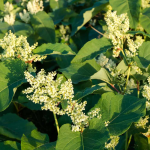Understanding the role of gut microbiota, the community of microorganisms living in our digestive tracts, is now the focus of much health and dietary research. Increasingly, the gut is viewed as a ‘second brain’, influencing not just our digestion, but our overall health, immunity, and even our weight. In the quest to understand the role of diet in shaping our gut microbiome, a high-fiber diet stands out for its potential benefits. This article will give you an insight into the fascinating world of gut microbiota, the impact of dietary intake on its diversity, and the potential effects on metabolic health and weight regulation.
The Gut Microbiota: A Mini Ecosystem in Our Bodies
When we talk about ‘gut microbiota’, we aren’t referring to just one or two kinds of bacteria, but a complex ecosystem of trillions of microbial organisms, including bacteria, viruses, and fungi. This ecosystem is unique for each individual, shaped by factors such as genetics, environment, and notably, diet. Research from reputed sources like PubMed and Google Scholar highlight how changes in gut microbiota can influence health outcomes, from metabolic diseases to mental health disorders.
Have you seen this : What Are the Cognitive Benefits of Bilingual Education for Children with Dyslexia?
A diverse gut microbiota is often associated with improved health. Different bacterial strains perform a range of functions, from breaking down food to regulating immune responses. A high-fiber diet is one of the key dietary strategies to promote this diversity.
Boosting Microbiota Diversity with a High-Fiber Diet
Dietary fiber is undigested food that reaches the colon, where it feeds our gut bacteria. In other words, fiber is the primary food for our gut microbiota. A high-fiber diet, rich in whole grains, fruits, vegetables, and legumes, provides a wide array of food sources for our bacteria, promoting the growth of diverse bacterial strains.
Also to discover : Can Wilderness Survival Training Enhance Self-Esteem and Leadership Skills in Adolescents?
According to multiple studies referenced on PubMed and Crossref, the intake of varied dietary fiber types can lead to an increase in beneficial bacteria such as Lactobacillus and Bifidobacterium. These bacteria are known for their roles in promoting healthy digestion, improving immunity, and reducing inflammation.
High-Fiber Diet, Gut Microbiota, and Weight Regulation
The relationship between gut microbiota and weight is complex and multi-faceted. CrossrefGoogle research suggests that certain bacterial strains can influence weight by affecting the metabolism of dietary components, appetite regulation, and energy expenditure.
A high-fiber diet can influence weight in several ways. Firstly, it can boost the growth of bacteria that produce short-chain fatty acids (SCFAs), which play an essential role in energy metabolism and fat storage. Secondly, the feeling of fullness associated with high-fiber foods can help control food intake.
In addition, certain types of dietary fiber, known as viscous fibers, form a gel-like substance in the gut, slowing digestion and absorption of nutrients. This process can help regulate blood sugar levels, reducing the risk of weight gain and metabolic diseases.
The Impact of a High-Fiber Diet on Metabolic Health
A high-fiber diet doesn’t just influence weight control, it can also impact other aspects of metabolic health. According to research on Google Scholar and PubMed, a diverse gut microbiota, nurtured by a high-fiber diet, can help reduce the risk of metabolic disorders such as type 2 diabetes, insulin resistance, and cardiovascular disease.
SCFAs produced by gut bacteria can improve insulin sensitivity, reduce inflammation, and regulate cholesterol levels. The slowing of nutrient absorption by viscous fibers can also help regulate blood sugar levels, further preventing metabolic disorders.
Unraveling the Complexities: Future Directions
As more research emerges on gut microbiota, it’s clear that the relationship between diet, gut bacteria, and health is intricate. While a high-fiber diet appears to offer many benefits, it’s also important to consider individual factors, including genetic predisposition and underlying health conditions.
Further research is needed to fully unravel the complexities of our gut microbiome and how best to feed it for optimal health. But for now, it’s safe to say that piling your plate high with fiber-rich foods can be a simple, effective strategy for promoting gut health and maintaining a healthy weight.
Dietary Fiber: The Key to a Healthy Gut Microbiome
The interplay between dietary fiber and gut microbiota is garnering increased attention from researchers. This connection is of particular interest because it offers a potential tool for personalized nutrition strategies aimed at maintaining a healthy weight and overall metabolic health.
Dietary fiber, which is a vital component of a balanced diet, has a profound impact on gut microbiome. The role of dietary fiber is to serve as a substrate for gut bacteria, allowing them to grow and thrive. In this way, dietary fiber helps to maintain a diverse and healthy gut microbiota.
When we consume foods rich in fiber, such as fruits, vegetables, whole grains, and legumes, we are essentially providing nourishment for our gut microbiota. Google Scholar and PubMed Crossref research shows that an increased intake of dietary fiber can help to enrich the diversity of our gut microbiota, favoring the growth of beneficial bacterial species.
Notably, the production of short-chain fatty acids (SCFAs) by certain gut bacteria is enhanced by a high-fiber diet. SCFAs play a critical role in modulating various metabolic processes in our bodies, including the regulation of blood sugar levels, cholesterol management, and immune response.
High-Fiber Diet: A Pathway to Weight Loss and Optimal Health
Understanding the link between a high-fiber diet, gut microbiota, and weight loss can open up new pathways for managing obesity and metabolic disorders. As shown in the article from PubMed Central and Google Scholar, a high-fiber diet can lead to alterations in gut microbiota composition, which in turn, can influence weight regulation.
As we’ve discussed, fiber-rich foods can boost the growth of beneficial bacteria, leading to the production of SCFAs. These SCFAs can influence energy metabolism, potentially aiding in weight loss. Furthermore, the consumption of high-fiber foods can promote satiety, helping individuals to control their food intake, thus facilitating weight management.
On top of that, a high-fiber diet can directly influence metabolic health. The ability of certain dietary fibers to slow down the digestion and absorption of nutrients can help manage blood glucose levels and reduce the risk of developing metabolic diseases such as type 2 diabetes.
Conclusion
In conclusion, the role of a high-fiber diet in shaping gut microbiota and influencing weight loss is clear, and the benefits extend beyond just weight management. A diverse gut microbiome, fostered by a high-fiber diet, can improve overall metabolic health, potentially reducing the risk of developing metabolic disorders.
However, the relationship between diet, gut bacteria, and health is complex and dependent on individual factors such as genetics and underlying health conditions. More research is needed to fully understand these complex interactions and to guide personalized nutrition strategies.
But as it stands today, incorporating a high-fiber diet could be a promising starting point for those looking to promote a healthy gut microbiome and manage weight. So, go ahead and pile your plate high with fiber-rich foods. Your gut bacteria, and by extension, your health, will thank you.
















